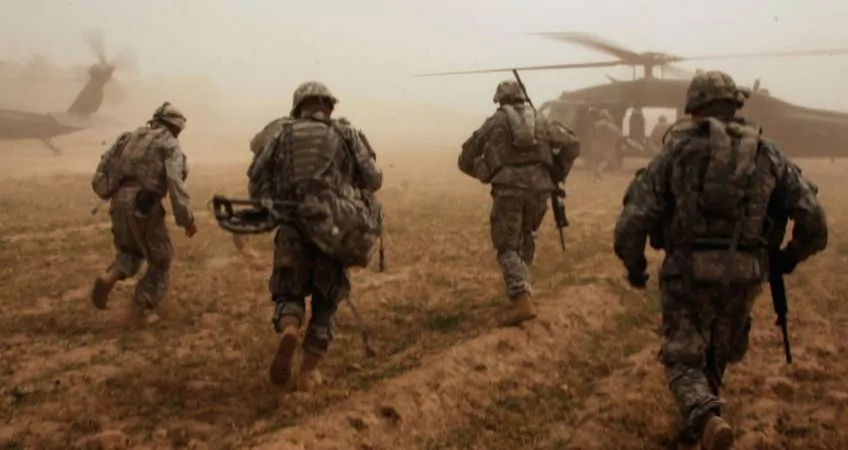
What War With Iran Will Look Like
148.25% In Less Than 6 Months…
Judging by the most recent threats of “obliteration” coming out of Washington and Tehran calling Donald Trump “mentally retarded,” it appears safe to say we are heading towards a military conflict.
In the face of that reality, I’d like to deconstruct the situation and think through what this war might look like and, most important for us investors, what impact it will have on financial markets so we can understand how to adjust our portfolios.
Is It Afghanistan And Iraq All Over Again?
When discussing the invasion of Iran, proponents of war like to exaggerate the benefits and obscure the costs. They say it’s about preventing a nuclear Armageddon with Israel but fail to mention the number of U.S. personnel who would die fighting.
The truth is, war with Iran would not resemble the conflicts in Afghanistan or Iraq.
It would be a lot worse.
Iran is bigger in terms of land mass and population than Afghanistan and Iraq combined. Invading it would require a larger force.
Moreover, the Shia Muslim majority (over 90% of the population) dominates the country, and most Iranians are of Persian ethnicity (61%)—meaning it would be difficult for the United States to spark internal ethnic tensions, as it has been able to do in Iraq.
Finally, Iran has vastly superior military capabilities than Afghanistan or Iraq. Its armed force—the Revolutionary Guard—is extremely loyal to the country’s religious leadership and, moreover, has experience waging war using unconventional tactics against conventionally superior enemies, such as the United States.
This means it would be difficult for the U.S. army to simply march in, as it was able to do in Afghanistan and Iraq.
Iran Can Threaten The U.S. Dominance At Sea
I believe the United States will continue with its economic sanctions. These have been tremendously effective so far.
Since the sanctions started, Iran has been suffering through a currency decline, unemployment growth, and an increased cost of living. This has led to countrywide demonstrations, which have been ongoing since April of last year. I am sure U.S. intelligence has had a hand in this. After all, it managed to organize massive protests in 1953 in Iran, which ultimately led to a pro-U.S. regime change.
To exacerbate the situation and, at the same time, cripple the country’s military capabilities, U.S. armed forces will conduct airstrikes on key defense facilities, such as airports, ports, army bases, and weapons factories. This is another tactic that has worked well in the past, especially during the Kosovo War.
However, the key battleground will be the Persian Gulf. That’s where Iran can put up the most resistance. They can employ hit-and-run attacks using land- and sea-launched anti-ship cruise missiles, mini-submarines, mines, and suicide boats. While these tactics will not be enough to defeat the U.S. Navy, they could inflict significant damage and lead to thousands of casualties.
Moreover, Iran’s navy has hundreds of small, agile missile-firing boats that can attack fast and with impunity and that are easy to conceal once back at shore.
Oil Crisis Dead Ahead
This situation will make the Strait of Hormuz, the world’s most important oil transit checkpoint, impassable. Meaning, the world will soon lose 21% of its oil supply. That’s on top of the 5% already gone from the market due to the United States’ sanctions on Iran and any country that dares to buy oil from them.
What we are looking at is a modern-day version of a 1970s-type oil crisis… and it will send oil prices soaring.
This is your chance to add oil stocks to your portfolio in advance of the coming spike.
ExxonMobil (XOM), Chevron (CVX), and BP (BP) are all solid choices, but I’m sticking with my personal pick, which is up 28% since the June 13 oil tanker attacks set the wheels in motion for a U.S. military intervention.
With the current hostile rhetoric coming from both sides, I know this is just the beginning of the appreciation we’re going to enjoy.
Good investing,
Leon Wilfan



